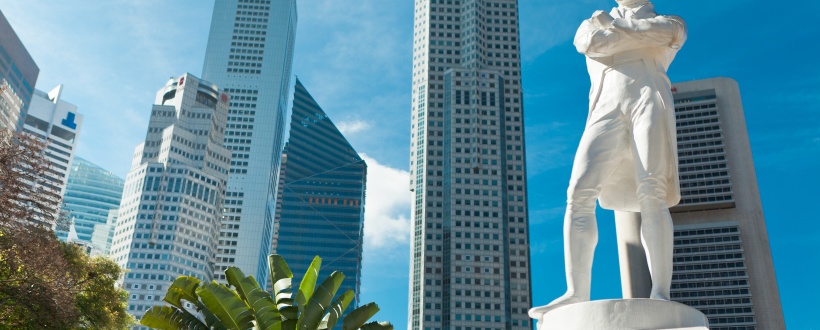By AJ Anderson
In 2014, the International Olympic Committee (IOC) decided that hosting duties for the Olympics could be shared between two countries. This led Tunku Imran Tuanku Ja’afar—Prince Imran, as he is known in the West and president of the Olympic Council of Malaysia—to float the idea of a joint-bid by Singapore and Malaysia for the 2028 or 2032 Olympics.
While Mr Ng Ser Miang, chairman of the IOC’s finance commission, confirmed that the idea of a joint-bid had been suggested, he claims that no one has “given any serious thought” to it yet.
This begs the question: is Singapore capable of hosting the summer Olympic Games? And what would this mean for Singapore?
Singapore and the Olympics
The Olympics presents a unique opportunity for Singapore to encourage interest in sports. Singapore placed ninth out of fifteen countries across the region in insurer AIA’s 2016 Healthy Living Index Survey. According to the Ministry of Education, obesity in school children has steadily increased from 10 per cent in 2000 to 11 per cent in 2013 and 12 per cent in 2014. With an increasingly sedentary lifestyle and greater emphasis on academic grades rather than an active lifestyle, this is becoming an issue that needs to be addressed.
Sports participation would help Singaporeans lead healthier and happier lives. Hosting the Olympic Games would promote healthy resilient people and a strong united community. The participating athletes that attend the games would inspire more people to play sports recreationally and competitively. An active life in sports prepares young Singaporean men for National Service and encourages the habit of integrating work and an active lifestyle from a young age. Additionally, children, youth and adults can develop essential skill sets that are highly valued in the labour market such as, teamwork, cooperation and a competitive spirit through a life in sports.
 Sports: Gets people to pull together
Sports: Gets people to pull together
Hosting The Olympic Games
It goes without saying that the Olympics is about competitive spirit and national pride, but it is also about business. Host cities invest heavily in the games with the hope of reaping sizable monetary returns for the local and national economy through tourism, marketing, and other means, not to mention the recognition it would bring. Cities also recognise that the potential long-term benefit of hosting the Olympic Games is the opportunity it provides to influence the pattern of urban development through investment in infrastructure and environmental improvements. There are a few factors that a host city should consider, though.
As a result of winning the bid to host the Olympic Games, urban development in host cities are required to fulfill three important criteria:
- Primary Structure: Sport and leisure structures, including stadiums, indoor arenas, and other specialised facilities such as swimming pools, shooting ranges, rowing courses and equestrian facilities must be available.
- Secondary Structure: Adequate housing and recreational facilities for athletes and the media (i.e., Olympic Village), a media and press center, and training facilities.
- Tertiary Structure: Infrastructure for transportation (airport, public transport, roads and highways), tourism (hotels and attractions) and utilities (sewage and telecommunications)
Singapore is a small island country. With a population size that hovers around 5.5 million people it is a very crowded city, second only to Monaco in terms of density. Can such a tiny nation support such a large sporting event?

Small Nation, Big Dreams
Despite its size (or lack thereof!), Singapore has been sending athletes to compete at the Olympic Games from way back before the country achieved independence in 1965.
Singapore has hosted, among other sporting events, the Youth Olympic Games (YOG) in 2010, which featured about 3,600 athletes across 26 sports, as well as the SEA Games in 2015, which featured some 7,000 athletes and officials across 36 sports.
Apart from the fact that Singapore has hosted sporting events in the past, there also exists various organisations actively supporting the sports scene in Singapore. The Singapore National Olympic Council (SNOC) is the national non-profit organisation that coordinates the selection of Singaporean athletes to compete in major games such as the Olympics, the Asian Games, the Commonwealth Games, and the South East Asian Games.
Sport and leisure structures
When London won the right to host the 2012 Olympic Games, it set out to avoid leaving any ‘white elephants’, by constructing the facilities with the aim of continued utilisation long after the 2012 Olympic Games had ended. For instance, the park itself reopened this summer, hosting major sports, music, and cultural events.
The centrepiece of the park, the Olympic Stadium, continues to host elite international sporting events. The stadium hosted several 2015 Rugby World Cup matches, one test match of a tri-series between the England Rugby League and the New Zealand Rugby League in November 2015, and will host both the 2017 IAAF World Championships in Athletics, as well as the 2017 IPC Athletics World Championships.
To top it all off, the stadium is the home of English Premier League football club West Ham United, who took residency as the Stadium’s long-term anchor tenant.
In that spirit of creating structures which have a purpose outside of the Olympic Games, Singapore already has a sporting facility in the form of the Singapore Sports Hub.
 The fully integrated state-of-the-art Singapore Sports Hub which officially opened in July 2015.
The fully integrated state-of-the-art Singapore Sports Hub which officially opened in July 2015.
The main facility at the 35-hectare Sports Hub is a National Stadium with a retractable roof and a capacity of 55,000—just 5,000 short of the London Olympic Stadium. So there is no need for Singapore to build a brand new stadium just for the Olympics.
Housing and recreation for athletes and the media
The Sydney Olympics in 2000 had 15,000 athletes and 6,000 media and press. In comparison, Singapore’s Youth Olympic Village (YOV) of the 2010 YOG housed over 5,000 athletes and team officials.
Located in Nanyang Technological University (NTU), the YOV served as both accommodations and a preparation point, and also contained specially designed cultural and educational activities for athletes. This resourcefulness demonstrated Singapore’s flexibility in adapting existing facilities for alternate uses, thereby negating the need to spend enormous sums of money to build new facilities.
And while the number of people NTU’s YOV housed was but a fraction of the 2010 Sydney Olympics, a similar concept could be used but on a larger scale, with multiple locations, should Singapore host the Olympic Games.
For hotels and accommodation, the IOC requires candidate cities to guarantee 40,000 rooms in various categories. As a city which thrives on tourism, Singapore had over 60,000 rooms available as of the end of 2015 and this number is steadily increasing.


Singapore boasts some of the most impressive hotels in the world
Transportation and Tourism
Transport during the Olympic Games should link the sporting venues, the Olympic Village(s), and hotels and accommodations in an efficient manner, while having minimal impact on the daily transport needs of local residents and businesses. For a candidate city to win a bid to host the Olympic Games, the candidate city must have a strategic transportation plan that takes into account the above considerations.
Singapore is known to have one of the most cost-efficient public transport networks in the world. It’s number five in terms of overall infrastructure, and number one in airport infrastructure. The city-state has high quality public transportation, flight availability, and minimal traffic relative to other cities of a similar size.

High Speed Rail between Malaysia and Singapore in 2020
In addition to travel by air and road, transportation between the two nations can come from the bullet train currently being developed, which will run from Singapore to Malaysia’s capital city, Kuala Lumpur. The train is to be finished by 2020, and will travel at speeds up to 220 mph.
What would this mean for Singapore?
Hosting a major sporting event such as the Olympics can have both short-term and long-term benefits for a host country. The Games will serve as a tourist attraction, an opportunity to attract foreign investment in Singapore, and as a way to rally political support for valuable infrastructure projects.
After the Beijing 2008 and London 2012 Olympic events, it is safe to say that hosting these major sports events encourage drastic improvements in a country’s transportation links and infrastructure. The pressure to meet high demands for these fundamental services provokes countries to act faster, developing transport networks which benefit their communities and increase the productive capacity of local businesses in the long-run.
Material benefits aside, Singaporeans would also experience positive social impacts, such as the development of national pride and fostering a sense of community belonging. And let’s not forget that the Olympics also acts as a foundation for international friendship, giving the host country the opportunity to expose the international community to its traditions and customs in an organic manner, potentially increasing the nation’s viability as a tourism destination.

A celebration of sports in Singapore
Yes it is possible for Singapore to host the Olympic Games in time to come. A large amount of work would be needed but the benefits are manifold. Challenges are inevitable, but Singapore as a nation is known for overcoming challenges in the face of adversity. With proper planning and implementation the dream of an Olympic Game in Singapore could become a reality.


